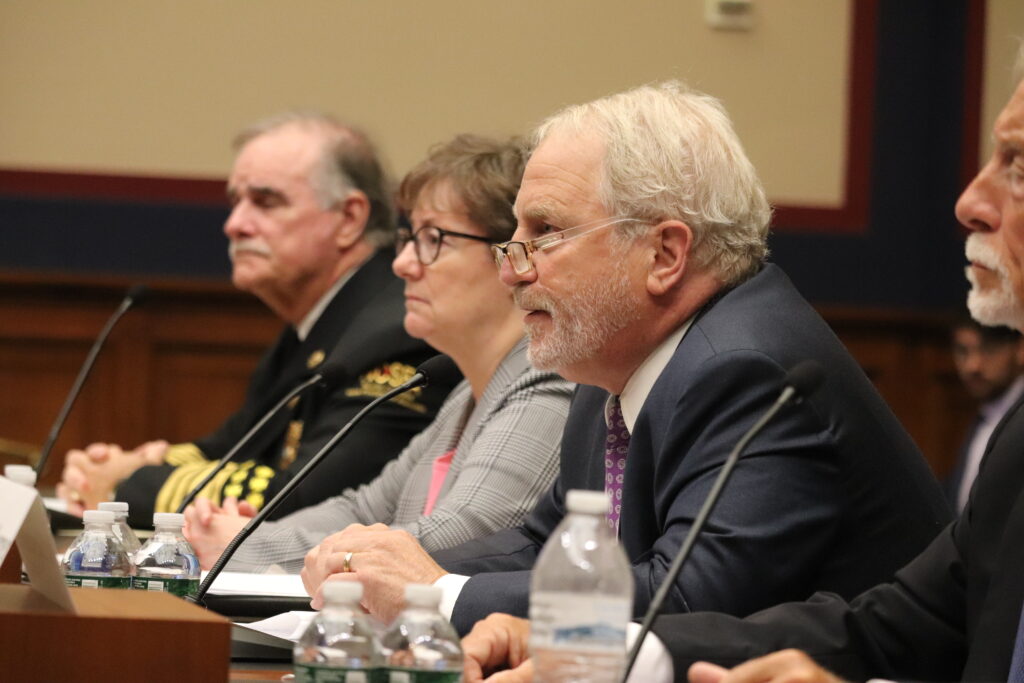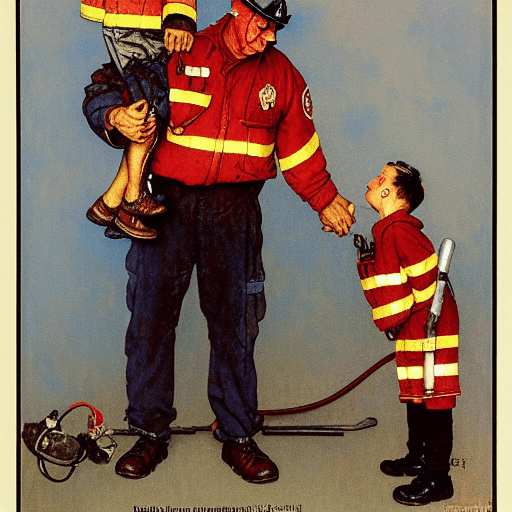As I announced earlier this week, I navigated through the Bibi Netanyahu security perimeter to testify before the House of Representatives Workforce Protections subcommittee of the House Education and Labor Workforce Committee. The hearing’s title was “Safeguarding Workers from OSHA’s Overreach and Skewed Priorities.” (You can watch the entire hearing here. It starts at minute 11:00. My full written testimony is here.)
Although the Republicans apparently forgot I was there, according to their press release, it is, nevertheless, very nice that the Republican House majority is so concerned about “Safeguarding Workers.” On the other hand, in all my years doing this work, I’ve never run across a worker who complained to me about “OSHA overreach.” (OK, well maybe one.)
What “overreach” and “skewed priorities” were the Republicans concerned about? OSHA’s proposed heat standard and walkaround regulation were the main focus of OSHA’s alleged “overreach,” along with OSHA’s Emergency Response standard that would allegedly put volunteer fire departments out of business.

And OSHA’s “skewed priorities” consisted of OSHA’s delay in issuing a standard to protect tree care workers for which the Tree Care Industry Association (TCIA) has been lobbying for years.
Now I don’t need to spend any more time here describing the serious need for an OSHA heat standard. We’ve discussed the deadly hazards of heat many times. We’ve also discussed the importance of OSHA’s walkaround regulation.
Regarding the other issues.
Yes, a tree care standard is needed. Barely a week goes by that the Weekly Toll doesn’t report a fatal tree care incident. But why is a business group, the Tree Care Industry Association, lobbying for a standard when business associations usually hate all OSHA standards?
Mainly because most tree care-related deaths come not from the professional tree care companies, but from landscapers who think they know how to cut down or top-off large trees. Or the two guys in a pickup truck who go out and rent a bunch of equipment because, how hard can it be to take down a tree? A strong standard, the TCIA calculates, would put the landscapers and the pickup truck guys out of business, thereby saving lives and moving more business to TCIA members. (On the other hand, CalOSHA has a separate tree care standard which doesn’t seem to intimidate the landscapers or the pickup truck guys.)
As I explained to the Committee members, the tree care standard is among OSHA’s top five regulatory priorities, but because of OSHA’s tiny regulatory budget (which Trump cut by 10%), OSHA simply doesn’t have the resources to move quickly on all of the standards it would like to. If the TCIA and Congressional Republicans really want this standard (or any standard) to move faster, one thing that would speed it up is to substantially increase OSHA’s budget. They could even pass legislation requiring OSHA to issue an Interim Final Standard within a short time period. If they were serious…
 And modernizing OSHA’s proposed Emergency Response Standard is desperately needed. Twelve emergency responders died in the 2013 West Texas fertilizer explosion and injuries and deaths among firefighters and emergency responders are not uncommon. OSHA’s current emergency response requirements are scattered among several 50-year-old standards, and as I testified, the equipment described in OSHA’s standards would fit better in a 1950s Norman Rockwell painting than in a 21st century firehouse.
And modernizing OSHA’s proposed Emergency Response Standard is desperately needed. Twelve emergency responders died in the 2013 West Texas fertilizer explosion and injuries and deaths among firefighters and emergency responders are not uncommon. OSHA’s current emergency response requirements are scattered among several 50-year-old standards, and as I testified, the equipment described in OSHA’s standards would fit better in a 1950s Norman Rockwell painting than in a 21st century firehouse.
The main concern is that low budget rural volunteer fire departments may not be able to afford OSHA’s new requirements, driving them out of business and leaving rural committees with fire and emergency response protections.
As I testified, they may have a point, and no one wants to drive volunteer fire departments out of business. (On the other hand, I added, if my daughter or son were emergency responders, I’d want them to have the best protections available.)
As I stressed, OSHA is still in the earlier stages of the regulatory process. They will collect written comments, followed by hearings, and then post hearing comments. If the industry can provide hard evidence (instead of just complaints) that volunteer fire departments can’t afford the standard, then OSHA will address the issue — either by exempting volunteer fire departments or reducing their requirements. OSHA is, in fact, required by law to ensure that OSHA standards are feasible for all regulated industries.
The Hearing: How It Went
First, I have to admit, I love testifying at Congressional hearings. I like the sparring with Congresspersons who don’t really understand the issue. It’s always frustrating however, because normally, you don’t get a whole lot of questions. Republicans usually just ask questions of Republican witnesses, while Democrats usually only ask questions of Democratic witnesses.
Because Dems are in the minority in the House, they only got one witness (me), while the Republicans had three: one representing the TCIA, one representing volunteer firefighters and an attorney from the union-busting law firm Littler Mendelson.
So this time, it was actually nice being in the minority. I got all the questions from the Democrats, and even a few from the Republicans.
I got several useful questions from Democratic members. Ranking Member Alma Adams asked me about the recommendation in Trump’s The Heritage Foundation’s Project 2025 that would exempt small businesses from penalties if it was their first time and not willful. Which gave me the opportunity to reply that I didn’t think an employee’s chance of coming home alive and healthy should be determined by the size of business he or she works for.
One of the most hostile and unsatisfying exchanges was between me and Congressman Burgess Owen of Utah who was concerned that some pointy head know-nothing bureaucrats were writing standards when they obviously didn’t care about workers as much as their employers care about their employees. He asked if OSHA thinks it has to protect employees against employers.
These were typical and predictable questions from a Republican member, but he didn’t really want to listen to my answers. (The exchange starts at minute 1:24.)
I tried to respond to his accusation that OSHA’s experts care less about workers than their employers.
“I think most employers want to do the right things and protect their employees. I’ve no doubt about that and most of the employers I’ve met….”
He then tried to cut me while I tried to continue “But there are a lot of employers who don’t, they try to cut corners…”
He then asked if OSHA had any staff that were formerly in the tree care industry and wouldn’t it be good to have such knowledgeable people writing the standard?
I responded, “Yes, let me say two things about that. One is, again OSHA has a very small budget. They can only have so many staff there and they can’t have staff that’s expert in every area…”
Whereupon he again interrupted me as I tried to explain that what OSHA does to address that problem is to hire expert contractors.
He then added that “I’ll Be Honest with you, entrepreneurs are very happy when OSHA doesn’t have a lot of money because the things you’re doing, even for a lay person, makes no sense, because what happens is, you’re putting people out of business.”
“I’ll Be Honest with you, entrepreneurs are very happy when OSHA doesn’t have a lot of money, because what happens is, you’re putting people out of business…” Congressman Burgess Owen (R-Utah)
It went on like that, back and forth, for a while, but you get the idea.
The prize for the most amusing conspiracy-theory question goes to Rep Eric Burlison from the show-me state of Missouri. Apparently taking his cue from right-wing nutcase Ben Shapiro, Burlison asked Fire Chief Tim Bradley if OSHA was to blame for Trump’s assassination attempt because OSHA rules wouldn’t allow the Secret Service to climb up on the roof.
(Actually, ex-Secret Service Director Kimberly Cheatle did argue there was a “safety factor” putting someone on a sloped roof, so they decided to secure the roof from below. I won’t comment about that questionable decision, but she never blamed OSHA regulations.)
Republicans apparently didn’t understand that Bradley actually refuted that contention in his response.
Heat is Heating Up
Although Chief Bradley and Mr. Gerstenberger had good points in their testimony, the same was not true for the most head-shaking testimony from Littler Mendelson’s Felicia Watson who used her entire testimony to trash OSHA’s heat standard proposal.
Watson…
- Accused the White House review process of being “perfunctory at best” because they didn’t take the full two months to review the proposal.
- Complained that the standard was a “one-size-fits-all approach.” (A criticism used by businesses against every OSHA standard.) Employers in the maritime industry can’t possibly be expected to comply with the same requirements as employers in “the construction industry, or agriculture, or farming or manufacturing.” Because they don’t all need water, shade and rest? (Also, what’s the difference between agriculture and farming? But I digress…)
- Accused OSHA of thinking that “employees are too childlike to take care of themselves”
- Accused OSHA of ignoring “issues related to an employee’s underlying health risks, or personal behavior choices while away from work, have proven connections that will impact their susceptibility to heat.”
“Personal behavior” like drinking a cup of coffee which can cause dehydration, or not drinking enough water outside of work. And complaining that employers can’t inquire about workers “personal health or lifestyle choices.” - Complained that employers might be cited if they fail to respond to heat illness symptoms like “headache, muscle or body aches, fever or feeling feverish/chills, elevated temperature, nausea, vomiting” even if those symptoms aren’t related to heat. Like maybe the employee has the flu. “Despite the myriad causes of these symptoms, an employer must assume any symptom is heat-related, and if the employer does not react quickly enough, they face a citation and penalty.”
- And, of course, the perennial business association complaint that the rule that will “become an administrative nightmare for smaller employers with less financial wherewithal to meet all the obligations found in the Proposed Rule.” (I guess because employees of small businesses don’t deserve to live as much as employees of larger businesses?)
Littler Mendelson’s Felicia Watson criticized “mandatory” rest breaks for farm workers, suggesting instead that employers just tell farm workers to take breaks “as needed.”
During the Q&A period, after admitting that farm workers are some of the most vulnerable employees, Watson criticized “mandatory” rest breaks for farm workers that might leave jobs shorthanded, suggesting instead that employers just tell farm workers to take breaks “as needed” so they can “self moderate.” (Minute 1:23:17)
Year, I’m sure telling farmworkers just to go ahead and take breaks “as needed” will work really well….
Watson’s testimony concluded with one final thought: “The issue of the cumulative effect of ever-changing regulatory requirements, coupled with new regulations going into effect at least annually. This is not confined to OSHA, but it can be an issue for regulated entities.”
Yeah, right. I only wish that OSHA issued new standards annually. Kind of like when Dr. Michaels and I were at OSHA and a Republican Congressman called to ask us how many standards OSHA had issued last week.
Anyway, it was all very entertaining. Watch it. You’ll understand better what we’re up against.
